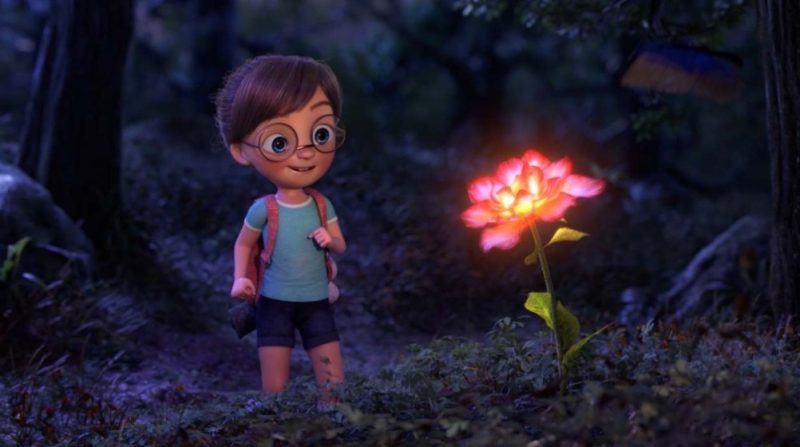
Animation is much more than just children’s cartoons or visual effects in movies. It’s a powerful visual communication tool that brands and marketers use to effectively communicate with the audience, bring gameplay to life, and create a wow effect in advertising campaigns.
Nowadays, animation is the key to emotional contact with the viewer. But when it comes to choosing between 2D and 3D, even experienced professionals sometimes get lost. Which format is better to choose? Which is more expensive and which is faster to produce? And most importantly, what will work best in your case?
The solution appears easy, but the truth is in the details. Let’s take a look at the actual distinctions between 2D and 3D animation and why, in some circumstances, 3D animation outsourcing might be the best call.
The Main Difference: It’s Not Just About Dimensions
At its core, 2D animation is confined to movement along two axes — vertical and horizontal. Imagine something planar, like a traditional drawing on paper or classic hand-drawn Disney films. Volume and depth are key components of 3D animation. Characters and objects may rotate, change angles, and interact with the surroundings.
Key Differences Between 2D and 3D Animation
When making a business choice, it’s not enough to simply glance at the animation. You need to understand what is going on behind the scenes.
Production Process
- 2D animation is created frame by frame. Every movement is drawn by hand or with software. It’s detail-oriented but faster to produce for short clips.
- 3D animation starts with modeling. You build 3D objects, rig characters, apply textures, animate movement, add lighting, and render everything. It’s more complex, but the final result looks more realistic.
Visual Impact
- 2D animation is easy to understand. It’s pleasant, nostalgic, and suitable for explainers, advertisements, and mobile interfaces.
- 3D animation is engrossing. It adds presence and reality, making it ideal for games, trailers, and showing tangible products.
Cost and Timeline
- 2D animation is usually cheaper and faster to produce, especially for static scenes or simple videos.
- 3D animation takes longer and involves more people, which means higher costs. But it also delivers more visual impact.
Scalability
- 2D doesn’t scale well. If you want to change something, it often needs to be redrawn from scratch.
- 3D is much more scalable. The same model can be reused in different scenes and angles without redrawing.
Use Cases
- 2D is commonly used in educational films, mobile apps, user interface animations, and marketing efforts.
- 3D is dominant in gaming, AR/VR, architectural rendering, cinematic entertainment, and complicated product demos.
When you understand these differences, it becomes easier to decide what your project really needs. Sometimes it’s about budget, sometimes about aesthetics, and sometimes about long-term strategy.
Why 3D Isn’t Always Better — But Sometimes It’s the Only Right Choice
Many company owners believe that 3D is inherently “better” than 2D. That is not true. A well-executed 2D animation can surpass a generic 3D image, provided it has a purpose. However, if you aim to capture attention, immerse people, or create a strong sensation of presence, 3D is frequently the only viable alternative.
This is especially relevant if you’re working on:
- mobile or console game development;
- a product trailer with a wow effect;
- presenting complex technical solutions or hardware.
- AR/VR or interactive media experiences
In certain circumstances, 3D is more than just a visual preference. It is a business tool. However, like any instrument, it is only effective when utilized by specialists. Otherwise, you may wind up with “nice graphics” but no spirit.
Why Outsourcing 3D Animation Makes Business Sense
If you’ve ever attempted to manage a 3D project, you know that it’s not something you can “throw together quickly.” Even a single figure frequently requires a complete crew of modelers, animators, riggers, and tech artists. Putting it together in-house? It’s like creating Pixar out of a coffee shop.
That is why many companies prefer to outsource 3D animation. And it’s not about cutting costs, it’s just a smart move.
- You get access to a skilled team with proven workflows and real-world experience
- You reduce time to market without sacrificing quality
- You avoid rookie mistakes like broken rigs, messy rendering, or shaky animation
- You stay focused on your product and business, not UV mapping or render farm logistics
A strong 3D outsourcing team isn’t a vendor — it’s a strategic partner who speaks the language of outcomes, not just engines and shaders.
Stepico: When You Want Results, Not Just “Pretty Graphics”
Stepico is a studio that does 3D for a reason. Their crew has vast expertise in both gaming and commercial animation. Most importantly, they realize that 3D is about creating commercial value, not just having things seem pretty. They ask insightful questions, listen intently, and commit to meeting both artistic and business goals. With Stepico, you’re not just receiving animation – you’re getting clarity, procedure, and a team you can trust.
Final Thoughts
Choosing between 2D and 3D is more than just selecting a format. It’s about deciding on a project approach. If you want quickness, simplicity, and easy of understanding, 2D is an excellent choice. However, if your project requires depth, immersion, and realism, 3D is the way forward. If you don’t want to go through 12 pipeline stages and render settings for a single scene, leave it to the experts. Allow your characters to not only come to life, but also sell, inspire, and achieve outcomes.
